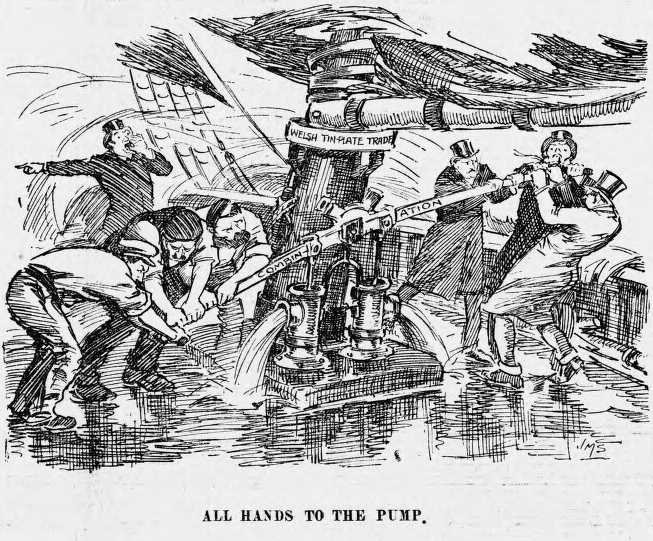Here list of the Mister Stormalong – Shanties Family
Interesting Facts about the Mister Stormalong – Shanties Family
A fine old shanty was Mister Stormalong – Shanties Family. The same as in “Lowlands Away”, this shanty was originally used at the pumps and later as a capstan. On this occasion, we talk about pump versions.
Stan Hugill’s book describes 6 versions of this shanty. In this particular version are two patterns:
- Praising the dead seamen,
- Praising the benevolent son of the dead seamen.
These songs were used for use at both types of pumps, breaking back pumps, and newer Downton pumps.
The older type was a pump with two handles where pumping happens by crew placed on opposite sites. Each site worked two to four sailors. When sailors from one site had a handle above the head. Then the other side was on the level of the ankles on the opposite side. In this case, the pumping shanties pace was as follows: the first tact, pulling the handle and pushing it up, the second pushing it down to the ankles, the third pulling the handle and pushing it up, and so on …

Hugill is making reference to this when he says “old-fashioned levers” (1961, pf. 45).
Newer Downton pumps it operated on the principle of two flywheels, where the sailors on the opposite side rotated their handles on the flywheels to make the work lighter. This pump calls the “Downton” pump:

I will show you a few versions described by Stan Hugill in his “Shanties From the Seven Seas”. All video reconstructions are trying to direct the listener to how they sound in actual ship deck action when sailors using it.
The above image displays sailors working at a Downton type of pump.
Short story of the Lowlands Away – Shanties Family
There are stories about that who believe it was built around John Willis- the owner of “Cutty Sark”. But true it is negro origin and of much older vintage the “Cutty Sark” period.
Worth noting, that the second pattern was usually added after the dirge-like regulation stanzas run out. The reason why the stanzas run out was: that the work at pumps was a constant job, especially on wooden ships. Each change to the course or trims of the sails caused the leakage literally “everywhere”. I do separate these 2 patterns because, in the second version, I plan to do a little “presentation” of work at the leaver “Jiggity-Jig” (older type) pump.
My private collection of books
Shantyman library – you will see descriptions and recommendations of positions worth diving into, true sources of knowledge about sea shanties. To gain knowledge about sea shanties is the main ultimate purpose of this library, every book in this library is somehow related to sea shanties and before mast songs.
More involvement in Traditional Sea Shanties
You can find this record here or directly listen below. If you want to discuss the record or share your opinion you can do it in my Facebook forum here.
